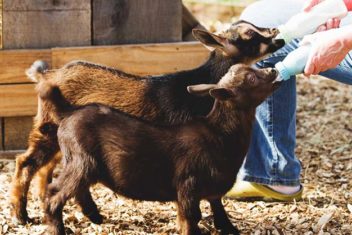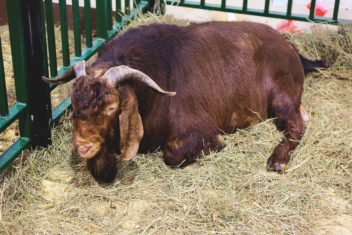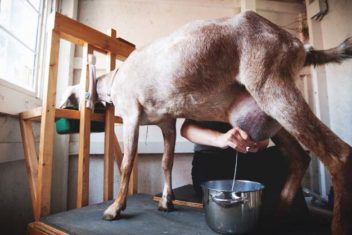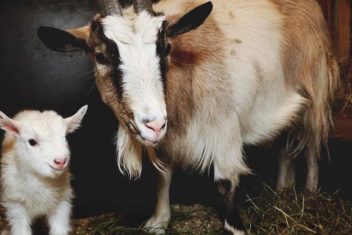When you make the choice to add animals to your life, you carry the responsibility of taking their health into your hands. Goats, for example, are quite a hardy critter, but they are not without their ailments.
Caprine Arthritis Encephalitis (CAE) is a dangerous goat disease that every new goat owner must become familiar with.
Read on to learn everything you need to know to keep your herd safe from this treacherous disease:
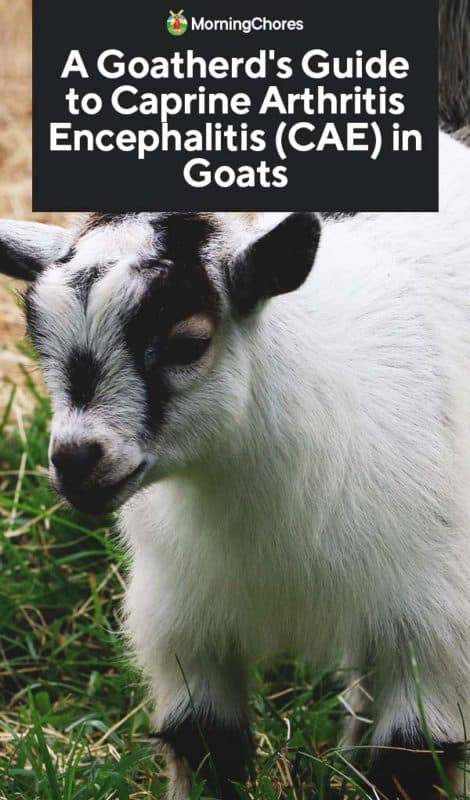
What is Caprine Arthritis Encephalitis (CAE)?
Caprine Arthritis Encephalitis is a virus that cannot be cured. It’s caused by a virus that is similar to that of HIV in humans.
Not to worry, though, CAE cannot be passed from goats to humans or to other animals.
CAE began spreading though goats in the US during the 1970s, and it spread fast. While many goatherds were not initially concerned about the spread of the disease, that changed in the 90’s when about 80% of the US goat population became infected.
Caprine Arthritis Encephalitis shows its face in 5 ugly forms:
- Arthritis – Swollen joints and progressive lameness
- Encephalitis – Swelling of the brain, typically in goat kids
- Mastitis – inflammation, and hardening, of the udder
- Pneumonia – Fatal congestion in the lungs
- Chronic Wasting – Deterioration, typically seen in adult goats
Signs & Symptoms of CAE

Signs of CAE can include any of the following (depending on how it affects the goat):
- Swollen knees
- Lameness
- Stiffness
- Difficulty or reluctance to get up
- Hard udder
- A decline in milk production
- Chest congestion
- Coughing
- Weight loss
- Dizziness and stumbling
- Seizures
- Paralysis
- Neck bent
Often, the first sign of CAE is swollen knee joints which become progressively painful and cause lameness. Things go downhill from this point and eventually the goat’s lungs become congested, it loses weight rapidly, and eventually wastes away.
A goat infected with CAE will eventually lose all functions of their bodily systems. And young goat kids may become paralyzed due to the swelling in their brains.
Treating CAE Symptoms to Ease Pain
Unfortunately, there is no treatment for CAE at this time. But you can help ease your goat’s pain.
If you think your goat(s) may be infected by CAE, you should consult your veterinarian to be sure. Your vet can then prescribe appropriate pain medication.
Goats with CAE are susceptible to secondary infections or other bacterial infections due to their low immune systems, and sometimes antibiotics can be prescribed to keep other infections at bay.
Unfortunately, all types of symptomatic CAE are typically fatal, so keeping your herd comfortable is all you can do to support them.
Prevention of Caprine Arthritis Encephalitis
There’s good and bad news here.
The good news is some goats will not show signs or symptoms and simply be carriers of the virus. Of course, the bad news is that it can be passed on from goat-to-goat without even knowing.
1. Prevent CAE Before it Spreads
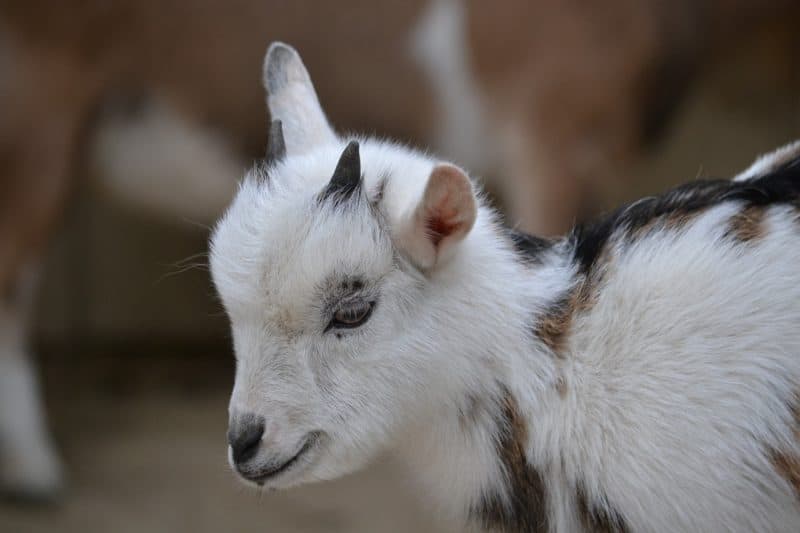
According to the Washington Animal Disease Diagnostic Laboratory, CAE is most often passed from the doe’s colostrum, and milk, to the kid. If you suspect that a pregnant doe has CAE get her tested for the virus and be available at kidding time to remove the baby from the doe and bottle feed it.
This can be a tricky maneuver because the amniotic sac should not be broken until the kid is completely delivered. But once the kid and sac are out, remove both and don’t let the doe come in contact with the kid. It’s not easy, but it’s worth a shot.
The downside?
Young kids won’t get colostrum from the doe, however, its chances of survival are better without it in this case. You can also purchase goat colostrum in powder form if needed.
2. Separate Infected Goats From the Healthy Herd
If you come to find out your current herd is infected, never add new goats to the infected herd. Adults goats can pass CAE to others through blood, feces, and other bodily fluids.
3. Use Separate Tools for an Infected Herd
If you have an infected herd and a healthy herd, never use the same hoof trimmers, needles, tagging equipment, or other tools for both herds.
Since the virus can spread through blood and other bodily fluids, it’s too risky to assume it will not get passed by your farm tools.
Moreover, change boots and clothes when working with the two different herds, because you could drag infected cells into the healthy herd’s environment unknowingly.
4. Only Purchase Tested Goats
When you consider purchasing from a breeder always request proof of a negative CAE test (and make sure it’s current and matches the goat’s tag number).
Special Note About Meat Breeders: If you are purchasing goats from meat goat breeders, ensure they have tested negative for Caprine Arthritis Encephalitis. Meat goat breeders aren’t often concerned about CAE because symptoms may not show up before the goat is slaughtered. If you are purchasing from a meat breeder for pets or as your own breeders, get the goats tested first.
How to Test Your Herd
You can test your herd in two ways:
- Collecting your own samples and shipping them to a lab
- Consulting a veterinarian to do the testing for you
If you’re squeamish around needles or unfamiliar with how to draw blood from a goat, you should consider consulting a vet.
And if you decide to send it to a lab yourself, check with the lab’s requirements for testing to ensure you have followed their procedures.
According to the University of Minnesota’s Veterinary Diagnostic Lab, you should test your herds, “Twice a year initially followed by annual testing is suggested for herds which are primarily negative, with testing before kidding recommended. Any new animals brought into the herd should be quarantined and tested twice (at least 30 days apart) before introduction with other negative animals.”
If you are adding new herd members regularly, you should consider a regular testing schedule.
When it comes to Caprine Arthritis Encephalitis, prevention is the most actionable thing you can do to protect your current, and future herd.



